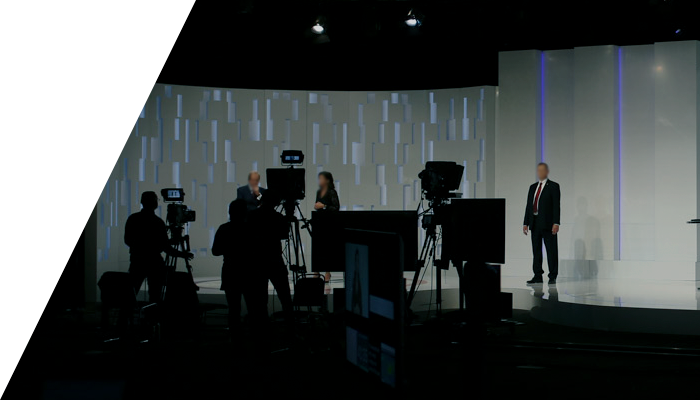How to organize a virtual AGM
As with any event, organizing a virtual AGM has its specificities. Your knowledge and experience in event planning will help you, but there are certain virtual characteristics that must be taken into consideration when organizing and holding the AGM. Discover these differentiating elements and obtain tips on how to reconcile them effectively before and during your virtual AGM. A simple and interesting AGM awaits!
Prior to the virtual AGM
Choosing the right platform
There are many webcasting and virtual gathering tools available today. However, not all platforms offer the same features and flexibility. So take the time to store around for the features that best suit your needs.
You will find tools specifically designed for virtual AGMs and their particularities. These webcasting solutions include advanced features that greatly facilitate the conduct of any remote AGM. Some are related to cybersecurity and voting, others to accessibility and broadcast quality. In all cases, they optimize the experience for participants, but also for organizers. A specialized tool is often the best choice to organize a virtual AGM.
Choosing the delivery format
Several options can be adopted for a virtual AGM. The choice will depend on your needs and your available means. In general, when we participate in the organization of a virtual AGM, we offer three delivery options. These formulas are flexible and adaptable in order to meet the demands of all companies and industries while taking part in the creation of a strong and positive image.
- Virtual AGM with audio webcast only and synchronized presentation (ex. PowerPoint, Keynote or other)
- Virtual AGM with video webcast by signal acquisition with your own tools (ex. webcam, laptop, conference room or other)
- Virtual AGM with professional recording in the company's offices, in our studios or in the studios of a partner
Define roles for everyone
Regardless of the delivery method you choose, some members of your team will have a role to play during the event. As you organize your virtual AGM, you will need to select these people and outline their roles. This should not be decided on the morning of the AGM! Everyone should know their tasks and responsibilities beforehand.
Roles ''on camera''
These initial responsibilities are no different from a traditional AGM.
- Moderator or Master of Ceremonies: This person will be the leader of your AGM. This is often the chairperson of the meeting.
- Speaker(s): The person(s), other than the Master of Ceremonies, who will be asked to speak at the meeting.
Behind the scenes roles
Unlike on-camera roles, the number of roles and the exact tasks to be performed behind the camera may vary depending on the chosen webcasting platform. For example, if you work with Digicast, two people from your company will be involved behind the scenes during the virtual AGM.
- Moderator: This person will be responsible for the question box and chat during the AGM. This person will be able to moderate the information shared by participants, answer questions directly, and push some questions to the moderator to answer live.
- Synchronized Presentation Manager: This person will be responsible for changing the various slides of the synchronized presentation throughout the presentation.
(Please note: If you are using Digicast, the moderator and synchronized presenter will receive customized training on the webcasting platform you choose).
Testing
Before the AGM, it is recommended that you test your equipment, facilities, synchronized presentation(s), videos, internet connection and network power. If there are any issues, you will have time to find new solutions or change your plans.
During the virtual AGM
If necessary, check quorum and attendance
Not all organizations will need to do this, but some will need to confirm that a quorum has been reached before the meeting can move to deliberate and vote. This may seem like a difficult challenge to overcome, but it's far from it!
When your AGM is virtual, you can easily track the number of attendees and their identities with the data collected by your webcasting tool. These statistics will be useful during the meeting, but also afterwards to calculate your performance indicators. Consider the information and data you wish to collect when choosing a platform.
Look at the camera
A common mistake made by people with little experience in front of the camera in webcasting is to address the people in the studio (or in the office). You should not speak to the room, but to the participants at home. In a virtual AGM, it is best to look directly at the camera. This way, the various speakers will appear to be speaking directly to the participants and will create a more direct contact.
In order to remain confident and calm throughout your virtual AGM, consult our article 7 Tips to be Confident in Your Corporate Webcasts or work with a company that specializes in virtual AGMs.




